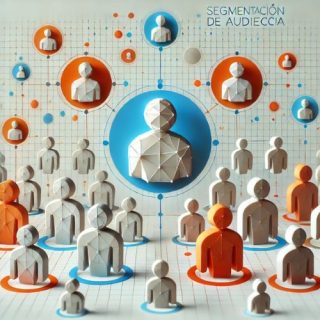Description
The product plays a key role in business development, as it is what creates the main value for customers and is the foundation of business success. Here are some key aspects that highlight its importance:
1. Creating and delivering value to customers
- The product is the main thing the customer receives. If the product solves customer problems or meets their needs, it leads to loyalty and repeat purchases. As a result, the base of loyal customers grows, and consequently, so do business revenues.
- The more unique and relevant the product’s value, the easier it is for the business to stand out among competitors.
2. Building competitive advantage
- High-quality products, innovative features, or a unique user experience can create a sustainable competitive advantage. This helps the business maintain market leadership and occupy its niche.
3. Market expansion and sales growth
- A successful product allows the business to enter new markets and increase audience reach. For example, launching a new product can open access to new market segments or countries.
4. Source of innovation and growth
- Continuous work on improving products leads to innovations that can drive business growth. New ideas and improved versions of the product allow the company to adapt to changes in the market and consumer expectations.
5. Increasing brand value
- Products that are associated with quality and meeting customer needs enhance the positive image of the brand. This increases customer trust and loyalty, which in turn contributes to the company’s market value.
6. Direct impact on revenue and profit
- The product is the main source of income for the business. Products with high demand and high profitability directly impact the company’s profit and sustainability.
Thus, a successful product is not only the foundation of a business but also a key tool for its growth and competitiveness. Developing and promoting products that are valued by users can make a company a market leader and ensure its long-term development.
1. Understanding user needs
- This is the key to a successful product. Before developing anything, it’s important to clearly understand what problems or pain points the product solves for users.
2. Product goals (both business and user goals)
- Business objectives and user needs define the direction of development. If the product doesn’t deliver value to users or help the business grow, nothing else matters.
3. Main features (MVP)
- The features that are the core of the product and address the key needs of users should always be prioritized. It’s important to focus on them to deliver value as quickly as possible.
4. Technical feasibility
- A good product cannot be developed without understanding its technical limitations and possibilities. This is critical for success at the planning stage.
5. Success metrics
- How will you measure whether the product has achieved its goal? The success of the project should be evaluated based on pre-established metrics to understand if the product is delivering results.
In simple terms, it is a “roadmap” for the team, which must understand what needs to be built, why it is important, and how it should work.
In the PRD for projects, you outline the main goals of the project, user and business requirements, use cases, as well as technical and functional details, so that each team (developers, designers, marketers) has a clear understanding of the final product.
Product Requirements Document (PRD) is a key document that describes all the requirements and specifications for developing a new product or feature. It serves as a guide for all development participants, from engineers to designers and managers. Here are the main sections included in a PRD:
1. Summary (TL;DR)
- Essence: A brief summary outlining the purpose and key features of the product. This section helps quickly grasp the essence of the document.
2. Problem or Opportunity
- Problem Description: A clear understanding of the problem that the product solves for users. This is the foundation from which further development is based.
- Alternatives: A review of existing solutions, if any, and why the new product is better.
3. Product Goals
- Business Goals: What does the business want to achieve with this product? For example, increasing sales, capturing a new market share, or improving user retention.
- User Goals: What benefit will the product bring to end-users? This may include improving user experience, speeding up task completion, etc.
4. Key Features (MVP)
- Feature Description: The main features that need to be implemented to meet the goals. This section outlines what the product should be able to do in the initial phase (MVP).
- Priorities: Which features are critical for the launch, and which can be added later.
5. User Stories
- Use Case Descriptions: How the product will interact with the user. For example, “As a user, I want to upload a file so that my data is always accessible.”
6. Technical Requirements
- Architecture and Technologies: Technical aspects such as server requirements, APIs, databases, programming languages, integrations.
- Constraints: Any technical limitations or dependencies that may affect development.
7. User Experience (UX)
- Interface and Interaction: A description of how the product should look and how users will interact with it.
- Wireframes or Mockups: Visual sketches showing the key elements of the interface.
8. Success Metrics
- KPI: How to measure the success of the product? These can include metrics such as active users, customer satisfaction, conversion rates, or revenue.
9. Milestones and Development Phases
- Phases and Priorities: Breaking development into stages, indicating the order of key tasks. No specific deadlines, but focusing on the importance of the stages.
10. Questions and Risks
- Risks: Potential technical or business risks and how to mitigate them.
- Questions for Discussion: Issues or questions that require further discussion with the team or stakeholders.
11. Non-goals
- Clear indication of what the product will not include or solve. This helps avoid scope creep.
The PRD helps the entire team understand the goals and objectives of the product, ensuring clarity and consistency at all stages of development.


